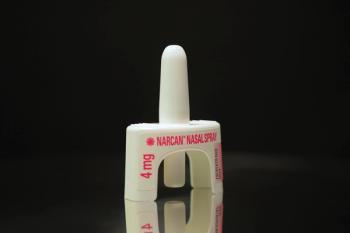
Beware of new focus on bedsores and weight loss
Long-term care pharmacists can expect to see more scrutiny of how they manage residents' pressure ulcers and weight control in the coming months. CMS, the Centers for Medicare & Medicaid Services, will add quality measures on weight loss and pressure sores to evaluations of nursing home quality.
Long-term care pharmacists can expect to see more scrutiny of how they manage residents' pressure ulcers and weight control in the coming months. CMS, the Centers for Medicare & Medicaid Services, will add quality measures on weight loss and pressure sores to evaluations of nursing home quality.
The weight-loss measure is part of the Department of Health & Human Services' Nursing Home Quality Initiative (NHQI) launched in November 2002. Unexpected weight loss suggests nutritional deficiencies that can contribute to pressure ulcers. A new study from the National Institute on Aging also suggests that weight loss may be an early symptom of dementia in the elderly.
A 32-year prospective study found a positive association between unexplained weight loss among elderly men and the development of Alzheimer's disease and vascular dementia. A large proportion of men who developed dementia lost about 10% of body mass in the two to four years before reaching the clinical threshold of dementia. The data were published in January's Archives of Neurology.
HHS is finalizing the Statement of Work for the contract cycle. Draft language calls for statistically significant improvement in high-risk pressure ulcer rate in nursing homes. The goal is based largely on a National Nursing Home Improvement Collaborative (NNHIC) on pressure ulcers conducted in 2003 and 2004 by Qualis Health, based in Seattle. It noted that the average pressure ulcer incidence among long-term nursing home residents is 8%. Based on a current nursing home population of 1.6 million, that translates into 128,000 nursing home residents with at least one pressure ulcer at any one time.
It's not that pressure ulcers are mysterious, said NNHIC director Jeff West, R.N., but that treatment guidelines are widely ignored. Studies at Veterans Affairs facilities indicate that adherence to Agency for Healthcare Research & Quality treatment guidelines is around 40%. "You can make significant progress on pressure ulcers by implementing recognized best practices," he said. "We worked with 52 nursing home teams in 40 states to implement a change package based on standard AHRQ guidelines from the 1990s. You should stick to the standbys that work well."
Why bother? NNHIC documents noted that pressure ulcers are among the most common causes of nursing home citations by CMS. Pressure ulcers are also associated with increased risk for serious infections, pain, intrusive and time-consuming treatments, restrictions in daily activities, and a change in self-image. Pressure ulcers are also associated with increased mortality and significant treatment costs.
"We talk about wound care in pressure ulcers, but we don't tend to talk about wound healing," said New York-based consultant pharmacist Thomas Cali. "Wounds are the one thing in long-term care that can actually get better with appropriate care. There is no wound that should not heal, including pressure ulcers."
Pharmacists should play an important role in treating pressure ulcers, West noted. Consultant R.Ph.s should have the authority to insist on aggressive wound treatment, nutritional therapy, pain management, and patient monitoring. "Pain is one of the most serious consequences of pressure ulcers," he explained. "You can't get good pain control without serious input from your pharmacist."
How to prevent and treat pressure ulcers is no secret, Cali said. The first step is to decrease pressure. For patients who already have ulcers, nurses must take care to avoid turning them onto the wound as part of the repositioning routine.
Step No. 2 is to correct the nutritional deprivation that almost always plays a role in pressure ulcers. "We call them pressure ulcers, but they're really protein calorie deficiency ulcers," Cali said. "It is a combination of pressure and malnutrition that prevents normal tissue creation and wound healing."
Newsletter
Pharmacy practice is always changing. Stay ahead of the curve with the Drug Topics newsletter and get the latest drug information, industry trends, and patient care tips.





















































































































































